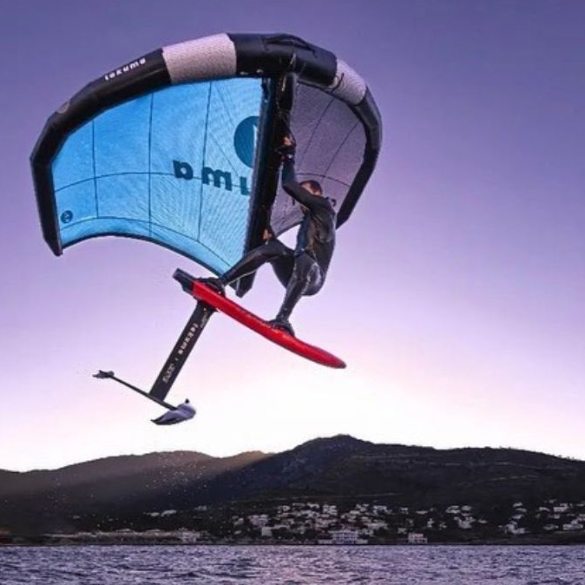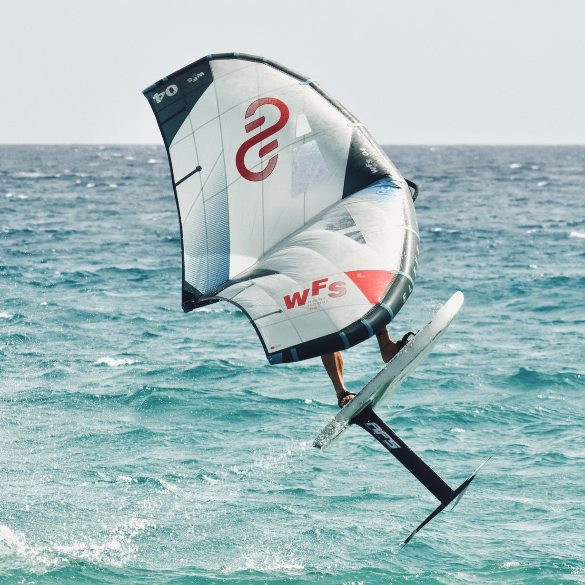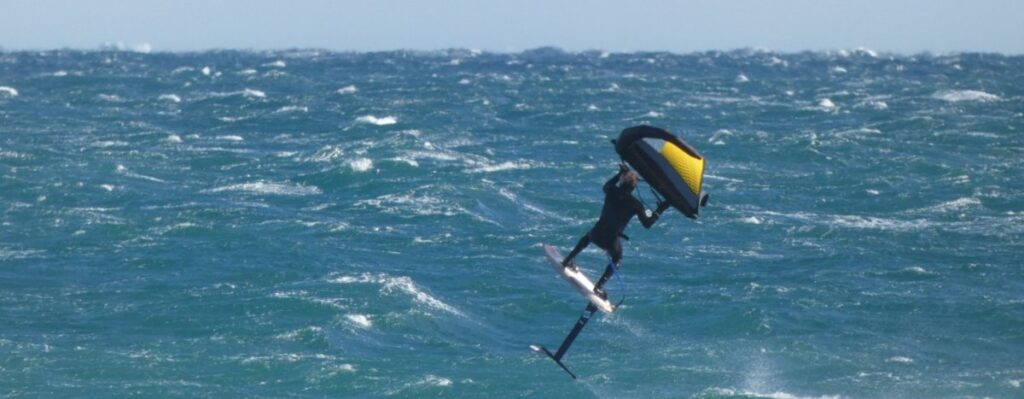Wingfoiling is grabbing more and more water sports enthusiasts every day, with its unique combination of grace and technique. At its core, wingfoiling involves using a handheld wing to use the wind’s power and drive the rider across the water on a foil board. Unlike traditional wind surfing, where your board is connected to the sail with a mast, wingfoilers have the wing in their hands. Once you master the basics of wingfoiling, and you start to fly longer distances, you can start thinking about your new challenge in wingfoil: how to jump. This website has wingfoil tutorials enough about the other wingfoil skills, this one brings you up to speed on how to get into the air (and safely back down).

Tricks
Once you master the art of jumping, you can do all kinds of tricks. But patience is key, this is a tricky move to learn.
The wingfoil setup (discover more about wingfoil equipment) allows you to glide over flat or choppy water, creating opportunities for various manoeuvres, including jumping. On this page we go in to wingfoil how to jump. This article is designed to guide beginners and intermediate riders through the fundamentals of executing a successful jump, a key skill in exploring the sport’s full potential. If you are a total beginner, see the wingfoil beginners guide.

How to jump
Learning how to jump is the next step in the journey of becoming a great rider, and brings that extra element of excitment to the sport.
Wingfoil: how to jump in 10 steps
- Get set:
Stand firmly in your straps and gain speed, moving crosswind. Pull back on your hand to position your wing vertically, like a windscreen. This initial step is crucial in wingfoil how to jump – step 1 is done. - Prepare to launch:
Apply pressure on the board and the foil while slightly heading upwind. Keep your wing fully sheeted. This sets the stage for an effective jump. - Balance and bend:
Focus on your front foot and bend your knees. Your board’s nose should point down slightly, but avoid excessive weight on the front to prevent the board from touching the water, which is key in maintaining balance. In general balance is extremely important in wingfoil. How to jump in the right way also depends a lot on your balance. - Shift and lift:
Just before jumping, shift your weight to the back leg and lift the foil from the water. This weight transfer is integral for enhancing your takeoff. - Mid-air management:
While in the air, keep the wing close. It naturally rises above, aiding in lift and softening your landing. Managing the wing’s position is crucial in this phase of the jump. - Control is key:
Maintain a firm grip. Dropping the wing or board could lead to accidents or equipment damage. Control descent is a safety-focused aspect. - Stay upright:
Keep your body upright and centered. Leaning too far back or forward can affect your landing. Proper posture is always important in this sport, also during the jump. Don’t crawl up. - Eye your landing:
Even before you start jumping, make sure you have enough free space around you and other riders or obstacles are at a safe distance. As you start descending, look towards your landing spot, tilting the board’s nose slightly towards the water for a smoother touchdown. - Cushion the landing:
Upon touching the water, bend your knees to absorb the impact. This action minimizes landing force, an essential technique in the wingfoil how to jump technique.” - Land safely:
Balance your weight to avoid harsh landings or nose dives. Achieving a gentle touchdown is the goal in this final step of your successful jump.
Take off
Here’s how you get out of the water. Move the nose downwards and then steer up so you start your jump.

Some safety pointers about wingfoil and jumping
- Keep a big distance from others, as well as from other obstacles. You may cover more distance in the air than you think, and you don’t want to be the guy that flies into another rider.
- Keep your foil far away from your wing (and your body). If you hit the wing with your foil, chances are high that you puncture it. If you hit your body with the foil, also unpleasant.
- Before jumping, learn how to ride with foot straps. Find our more about wingfoil and footstraps here. It’s paramount to jump with both feet in the footstraps!
Keep in mind
To excel in wingfoiling, especially in jumping, patience and practice are key. Start with small jumps, gradually building your confidence and skill. Safety should always be a priority – ensure you’re familiar with your equipment and the surroundings. As you gain experience, you’ll find that wingfoiling opens up a new realm of possibilities on the water, enhancing your enjoyment and skill in the sport. Also see our other wingfoil tutorials:
See also:

